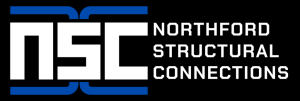

An overview of double-tee shear connections used in precast concrete structures
Article Sponsored by:
Northford Structural Connections (NSC) specializes in innovative engineering solutions for enhancing the safety and durability of precast concrete structures. Their patented products, including the Double-Tee Flexible Connection (DTFC) and Double-Tee Connection Pro (DTC Pro), address critical challenges like fatigue, corrosion, and seismic resilience. With a focus on quality and longevity, NSC provides advanced connection systems trusted by industry professionals for both retrofitting and new construction projects.
In the realm of precast concrete, one important element stands out: the double-tee shear connection. This guide aims to provide beginners with essential knowledge and insights about double-tee shear connections, their applications, benefits, design considerations, and implementation techniques. Understanding these factors is crucial for novice engineers, architects, and builders in the precast concrete industry.
A double-tee shear connection is a structural element used to join two precast concrete pieces together, particularly during the assembly of structures like parking garages, commercial buildings, and industrial facilities. The design consists of two tee-shaped elements that, when placed adjacent to each other, form a continuous surface.
Double-tee shear connections are comprised of several integral components, including:
Double-tee shear connections are widely adopted in various precast concrete applications. Their unique design and structural benefits make them particularly effective in the following scenarios:
The use of double-tee shear connections offers various advantages, especially when compared to traditional concrete connections:
Designing double-tee shear connections requires careful consideration to ensure structural performance and safety. Key design factors include:
Understanding the loads a double-tee shear connection will encounter is crucial. These include:
Proper detailing of the shear connection is vital. Some important aspects include:
Once designed, the implementation of double-tee shear connections requires precise execution. Here are key steps to ensure success during installation:
A well-prepared site is vital for the correct placement of double tees. This may involve:
Proper lifting and transporting techniques are essential to avoid damaging the precast elements. Some considerations include:
The final assembly process involves securely positioning the double tees and applying grout. Key recommendations include:
While double-tee shear connections provide numerous benefits, they are not without their challenges. Here are some common problems and potential solutions:
Cracks may form in precast concrete elements due to various factors. To mitigate this:
Improper alignment during installation can lead to structural issues. To combat misalignment:
A firm grasp of double-tee shear connections is vital for anyone entering the world of precast concrete. By understanding their design, applications, benefits, and implementing best practices, beginners can navigate these structures with confidence. Continuous research and familiarization with advancements in precast technology will further enhance knowledge and proficiency in this significant sector of construction. As beginner engineers and architects embark on their careers, mastering double-tee shear connections will undoubtedly contribute to their success in designing and constructing safe, efficient, and durable buildings.

Concrete Strength • Metal Resilience • Connecting Futures
Phone: (203) 777-0751
Email: admin@nscclips.com
News Summary On a normal Thursday evening, an Amtrak train struck three family members in…
News Summary In a significant development, GOP Representative Anna Paulina Luna is advocating for remote…
News Summary A Michigan couple, Paul and Christy Akeo, spent nearly a month in a…
News Summary Communities from Kentucky to Missouri are reeling from a devastating tornado outbreak that…
News Summary The Trump administration has fired General Timothy Haugh, the director of the NSA,…
News Summary Charlotte's real estate development landscape is facing new challenges due to recent state…